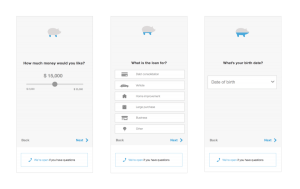— April 20, 2018

geralt / Pixabay
Change is never easy. Whether moving to a new office or implementing new systems, businesses – regardless of their size – will always encounter resistance to change. The key to success is harnessing the energy in that resistance, rather than trying to quash it.
According to Dr. Venkoba Rao, an expert in Business Strategy and Human Resource Management, “There is a direct cause-and-effect relationship between employee engagement and organizational innovation.” Dr. Rao notes, “In the face of unprecedented economic, social, demographic, and environmental challenges, organizations need to direct their efforts at mobilizing the creative potential of all its human capital – employees and customers – to contribute big new ideas and help organizations to drive forward.”
With that in mind, a company should start with its employees to foster a culture of organizational change and innovation. Regardless of their roles, employees are front-and-center when it comes to dealing with the operational processes that make the business tick – or hold it back. They know what works and what doesn’t. As a result, their frustration with repetitive tasks and cumbersome processes is the energy that a business needs to harness if it is to become truly innovative.
How to engage employees in building a culture of innovation, however, is a chicken and egg question. Innovation and employee engagement are interactive processes. Each encourages the other.
A successful business leader needs to communicate that innovation is important to the success of the business through words and actions. That means listening, considering all suggestions and, where appropriate, putting those suggestions into action. Giving employees a voice in how the company runs will benefit the business, not only by unlocking the insights staff provide that can improve business efficiency, but also by increasing loyalty by acknowledging the value of employee contributions to this process.
Business leaders should encourage employees to document and report inefficient or complex processes or systems to identify inefficiencies. The required action may be anything from the redesign of a single process to building the business case for a larger system replacement. Regardless of the outcome, it is essential to acknowledge employees for their contributions, because that is an investment in a proactive culture of engaged and motivated staff.
The specific tactics used to solicit staff feedback will depend upon the size and the structure of the organization. Examples of engagement practices include:
- Recruiting “influencers” within business units to gather ideas and feedback from their teams;
- Organizing one-on-one meetings to solicit suggestions from less outspoken staff;
- Facilitating meetings with staff collaboration in mind so that leaders listen as well as speak;
- Organizing think tanks to examine identified problems and to brainstorm solutions; and
- Having leaders walk the floor and directly engage employees for a few minutes a day which can be a simple and understatedly effective means of building rapport and gathering feedback.
Online tools can help to capture, compare, and collate employee feedback. Providing online forums, feedback forms, or organizational “social networks” to foster staff collaboration and capture feedback can assist in gaining greater insights into how to improve business efficiency and performance.
As Dr. Rao advises, “Employee engagement practices are, in the purest form, innovation exercises. Hence, to engage employees and to benefit from it, organizations must invest in engagement practices.”
Business & Finance Articles on Business 2 Community
(86)







